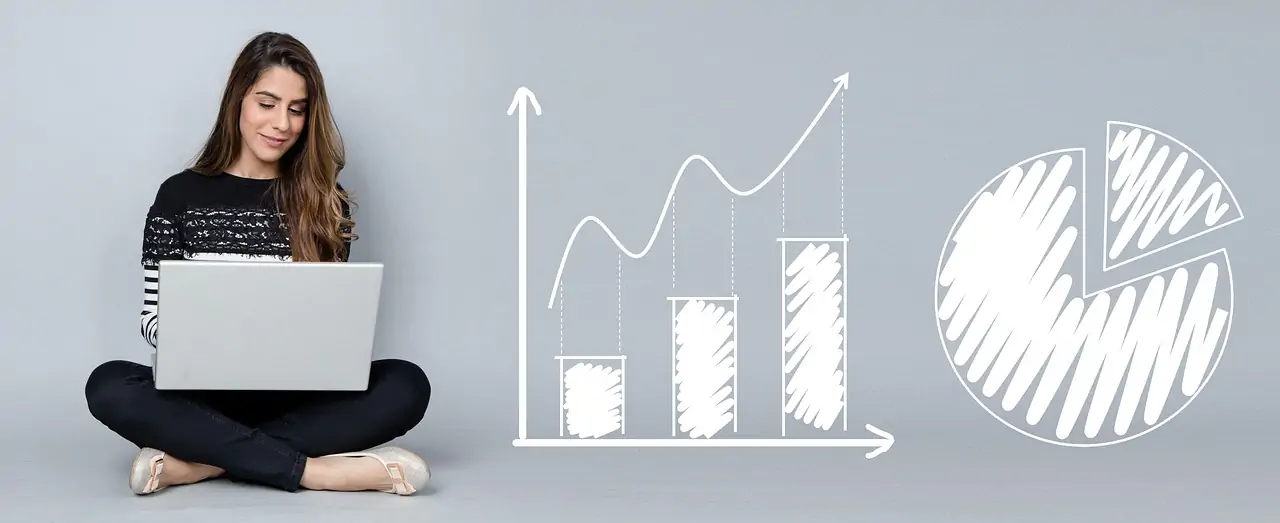Line graphs provide valuable insights into trends over time, showcasing how data changes can signify broader patterns. Whether you’re identifying gradual increases, sudden shifts, or sharp declines, mastering the language of trends will enhance your writing and clarity. In this article, we’ll explore various methods for describing trends, including how to highlight significant changes and compare data points, ensuring you’re well-prepared to tackle this part of the exam.
Key Descriptive Methods for Analyzing Trends in Line Graphs
Below is a summary of key descriptive methods that can help you articulate different types of changes, such as gradual increases, sudden spikes, and sharp declines. In addition, I put a line graph with sample data here to be referred by the summary table.
Overall Trend
Description Method
Identify the main trend over time
Frequently Used Words/Collocations
“Overall,” “In general,” “The trend shows”
Example
Overall, the trend shows a steady increase in visitors from 2015 to 2022.
Increasing Trend
Description Method
Describe periods of increase
Frequently Used Words/Collocations
“Gradually rise,” “Sharp increase,” “Steady growth”
Example
From 2015 to 2016, the number of visitors gradually rose from 150,000 to 180,000.
Decreasing Trend
Description Method
Describe periods of decrease
Frequently Used Words/Collocations
“Sharp decline,” “Significant drop”
Example
In 2020, there was a sharp decline to 250,000 visitors.
Fluctuating Trend
Description Method
Discuss variations in data
Frequently Used Words/Collocations
“Fluctuate,” “Volatile,” “Oscillate”
Example
Visitor numbers fluctuated between 300,000 and 400,000 over the years.
Comparison of Data Points
Description Method
Compare specific points in time
Frequently Used Words/Collocations
“In comparison,” “Compared to,” “While”
Example
“In comparison, the number of visitors in 2017 was 67% higher than in 2015.”
Describing Peaks and Troughs
Description Method
Identify highest and lowest points
Frequently Used Words/Collocations
“Peak,” “Trough,” “Reaching a maximum/minimum”
Example
The number of visitors peaked in 2022 at 500,000.
Rate of Change
Description Method
Discuss the speed of changes
Frequently Used Words/Collocations
“Increased by X%,” “Decreased by Y%,” “Fold increase”
Example
From 2016 to 2017, the number of visitors increased by 67%.
Conclusion
Remember to identify overall trends, highlight significant changes, and use precise vocabulary to convey your analysis effectively. Incorporating terms for gradual increases, sharp declines, and sudden transitions will enrich your descriptions and improve coherence in your writing.
Appendix: Line Graph Writing in IELTS Authentic Practice Tests
- IELTS 5 Test 1 Writing Task 1
- IELTS 6 Test 1 Writing Task 1
- IELTS 7 Test 2 Writing Task 1
- IELTS 8 Test 4 Writing Task 1
- IELTS 9 Test 4 Writing Task 1
- IELTS 11 Test 3 Writing Task 1
- IELTS 15 Test 2 Writing Task 1
- IELTS 16 Test 1 Writing Task 1
- IELTS 17 Test 4 Writing Task 1
- IELTS 18 Test 1 Writing Task 1
- IELTS 18 Test 4 Writing Task 1
- IELTS 19 Test 1 Writing Task 1
